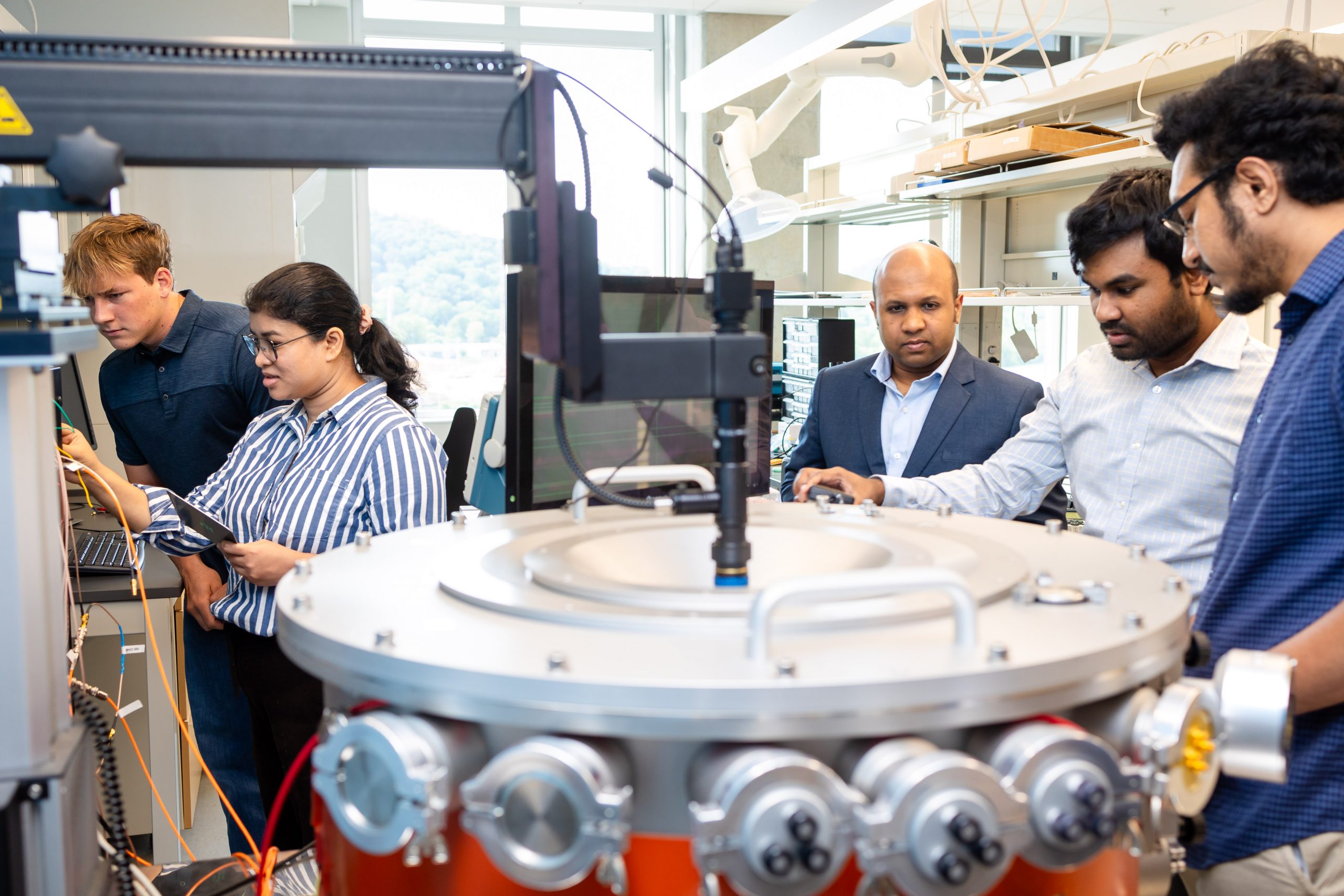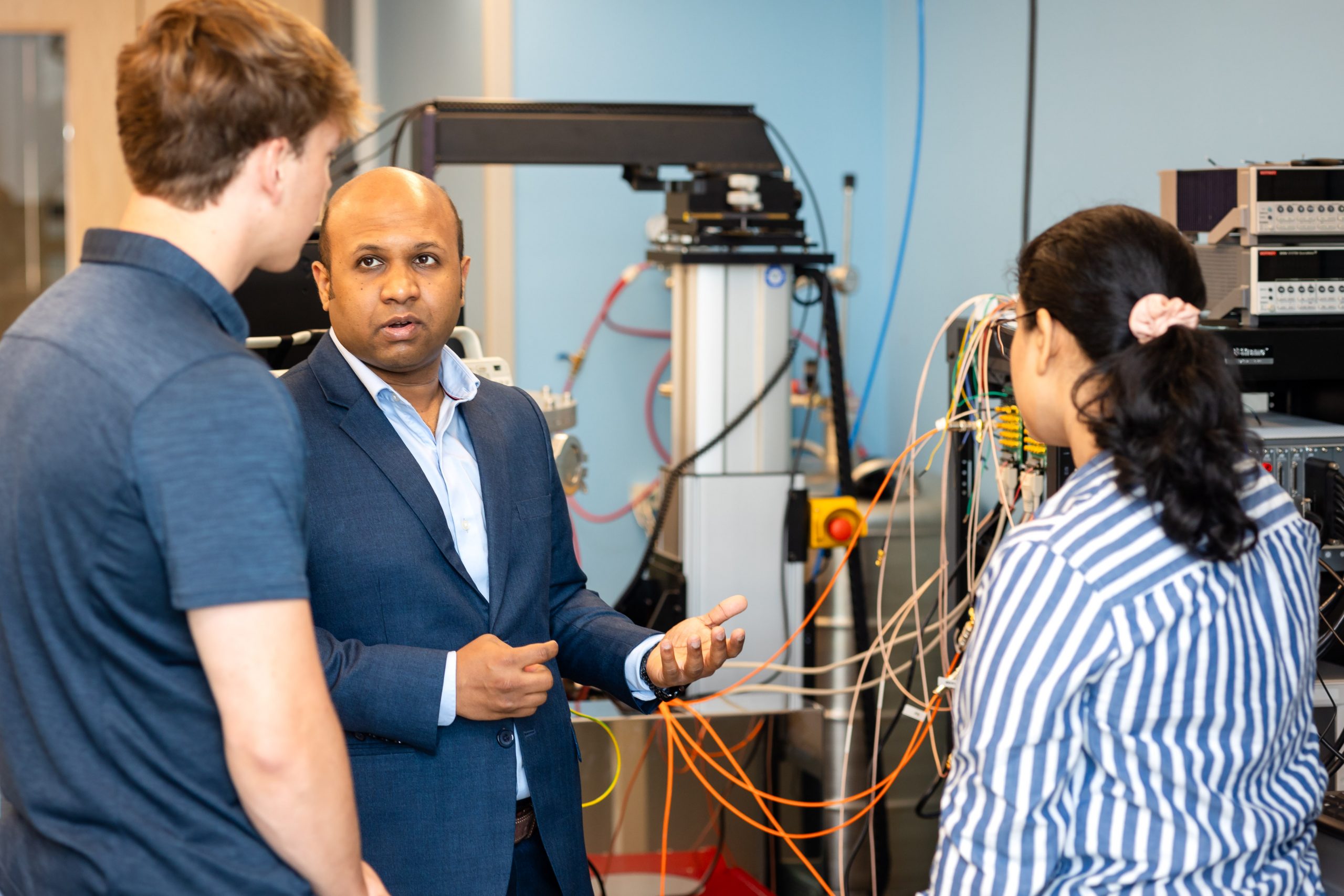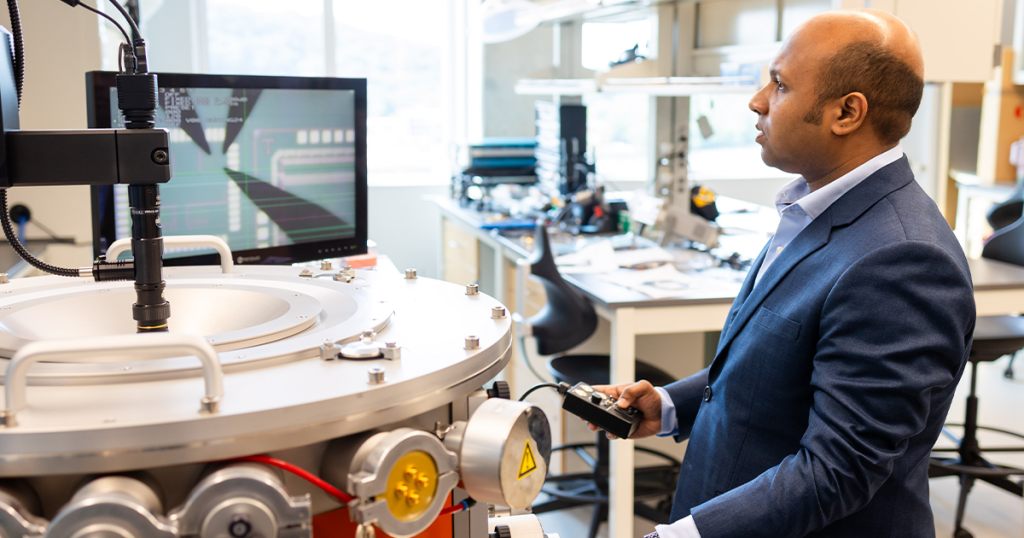Artificial Intelligence (AI) systems such as Chat GPT, Siri, and Alexa have become staples of daily life for many. Companies like Amazon, Google, and Meta have been building massive data processing facilities across the country to keep up with the demand.
Environmental Breakdown of AI
Although AI systems can simplify some tasks, they don’t come without an environmental cost.
“They take up more energy than some countries like Netherlands, Sweden, Argentina require in a year,” Assistant Professor Ahmedullah Aziz said. “Just imagine a country of this proportion needing some energy for an entire year and a system like Chat GPT requiring more energy than that. These AI systems are only going to increase as well, so you can imagine the implications of this.”

Aziz and PhD student, Shamiul Alam, have been trying to address this issue in UT’s Nanoelectronic Devices and Integrated Circuits (NorDIC) Lab. Their focus has been on developing new superconducting logic devices that overcome the limitations of traditional technologies, including limited scalability and vulnerability to hardware attacks.
Advancements in the NorDIC Lab
The lab has made groundbreaking advancements in superconducting electronics, offering innovative solutions poised to revolutionize cryogenic applications. This progress is critical for developing large-scale quantum computing systems. Superconducting electronics require 1,000 times less energy than semiconducting electronics like cell phones or laptops. Therefore, superconducting electronics holds immense potential for energy efficient high-performance computing and aerospace explorations.
Cryogenics refers to the production and effects of extremely low temperatures. Quantum computing systems require extreme cold to operate effectively. Components like qubits (the basic unit of information in a quantum computer) need to cool down. Regular computers use a fan to keep critical parts from overheating, whereas quantum computers need to be in a room at temperatures just a few milli-Kelvins above absolute zero to allow them to perform calculations.

“The problem is conventional computers are at room temperature, and superconducting qubits are at extremely low temperature, so interfacing these two is extremely challenging,” Aziz said. “That is what’s limiting our quantum operating systems right now. Even if you want to make it more powerful by increasing the number of qubits, you can’t because our room temperature controllers bring in external noise and destroys the qubits at an ultra-cold temperature.”
Recent Innovations
Aziz and his lab have contributed to major innovations in the field, including two recent projects.
The first was the introduction of Ferroelectric SQUID-based voltage-controlled superconducting logic family, published in the Journal of Applied Physics. The work was done in collaboration with Princeton University, Penn State University, and the University of Notre Dame. The approach enables effective voltage control, simplifying the design of Boolean logic gates. Moreover, the use of voltage control facilitates the seamless integration of multiple logic gates, which is difficult with the existing current-controlled superconducting logic circuits.

The second, which was in collaboration with the National Institute of Standards and Technology (NIST), developed a heater cryotron-based reconfigurable logic circuit cap capable of performing multiple operations with a single device. Using a single device for multi-input logic functions significantly reduces the number of components needed, providing superior area efficiency compared to existing designs. The same circuit can be also configured to perform different logic operations, which ensures that different blocks in a processor will look identical in terms of design. This enhances hardware security against reverse engineering attacks, a crucial innovation for developing secure superconducting processors. That work was published in Applied Physics Letters.
“There remain decades-long challenges with superconducting electronics that people couldn’t solve, and we are trying to solve those problems and bring it to the mainstream,” Aziz said. “We are setting the ground level work for potentially reimagining the entire field of superconducting electronics.”
Contact
Rhiannon Potkey (865-974-0683, rpotkey@utk.edu)
